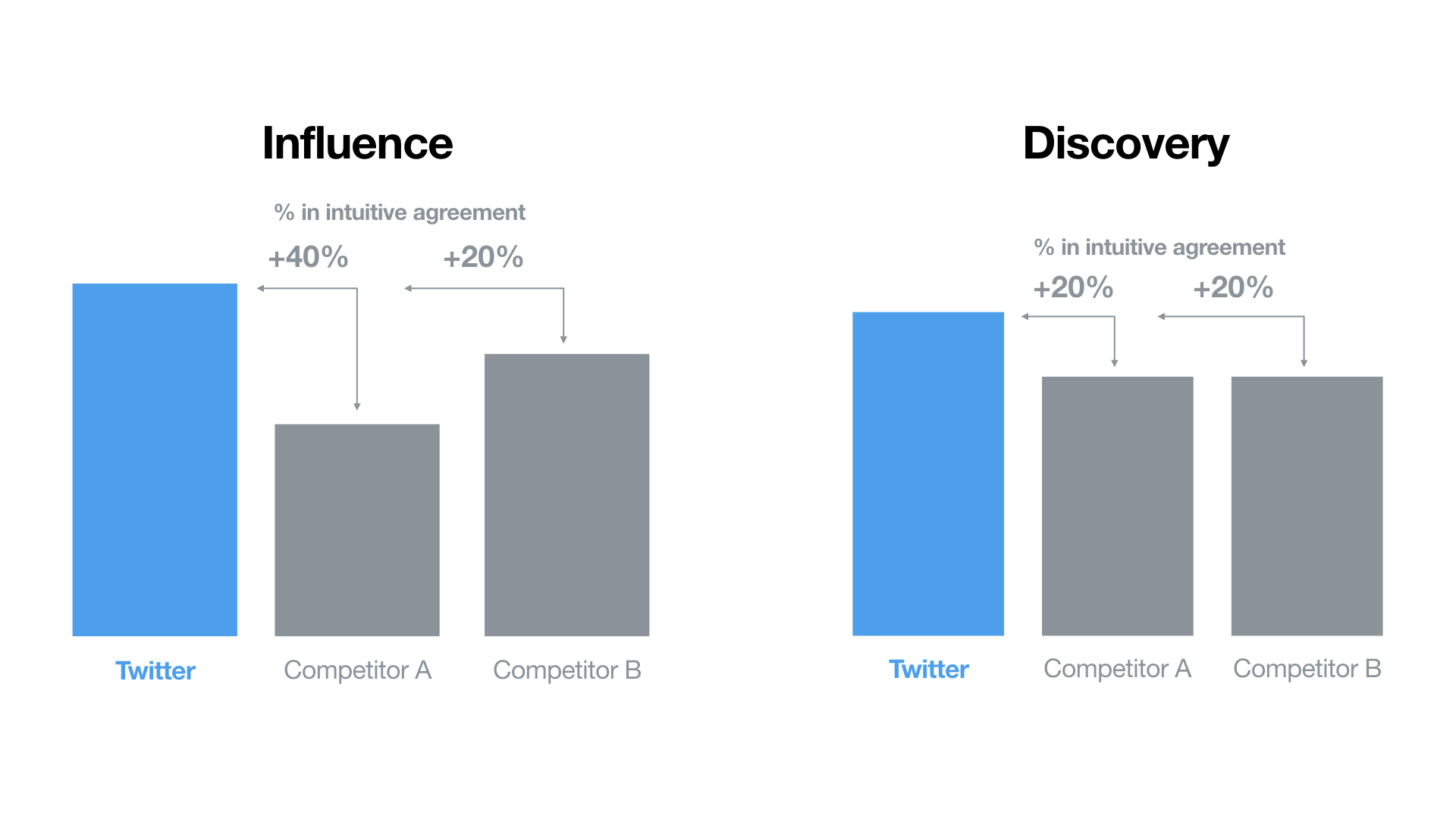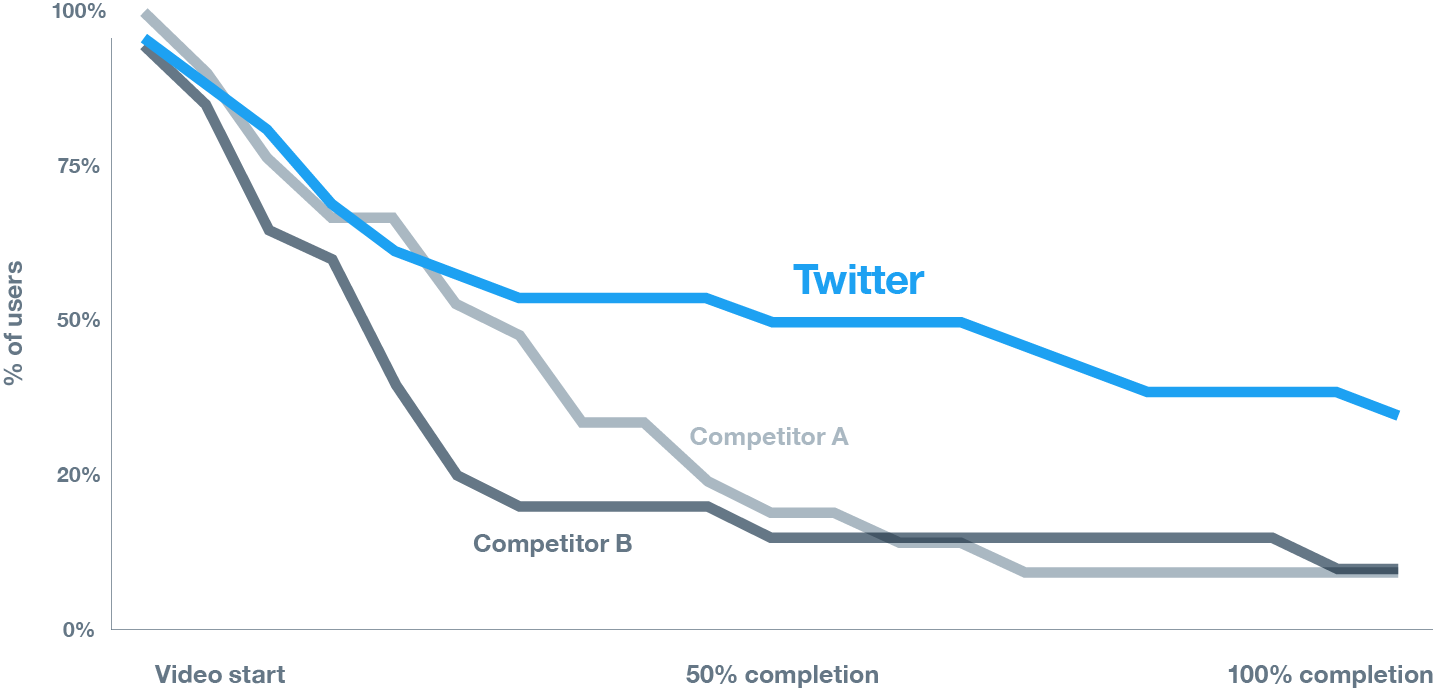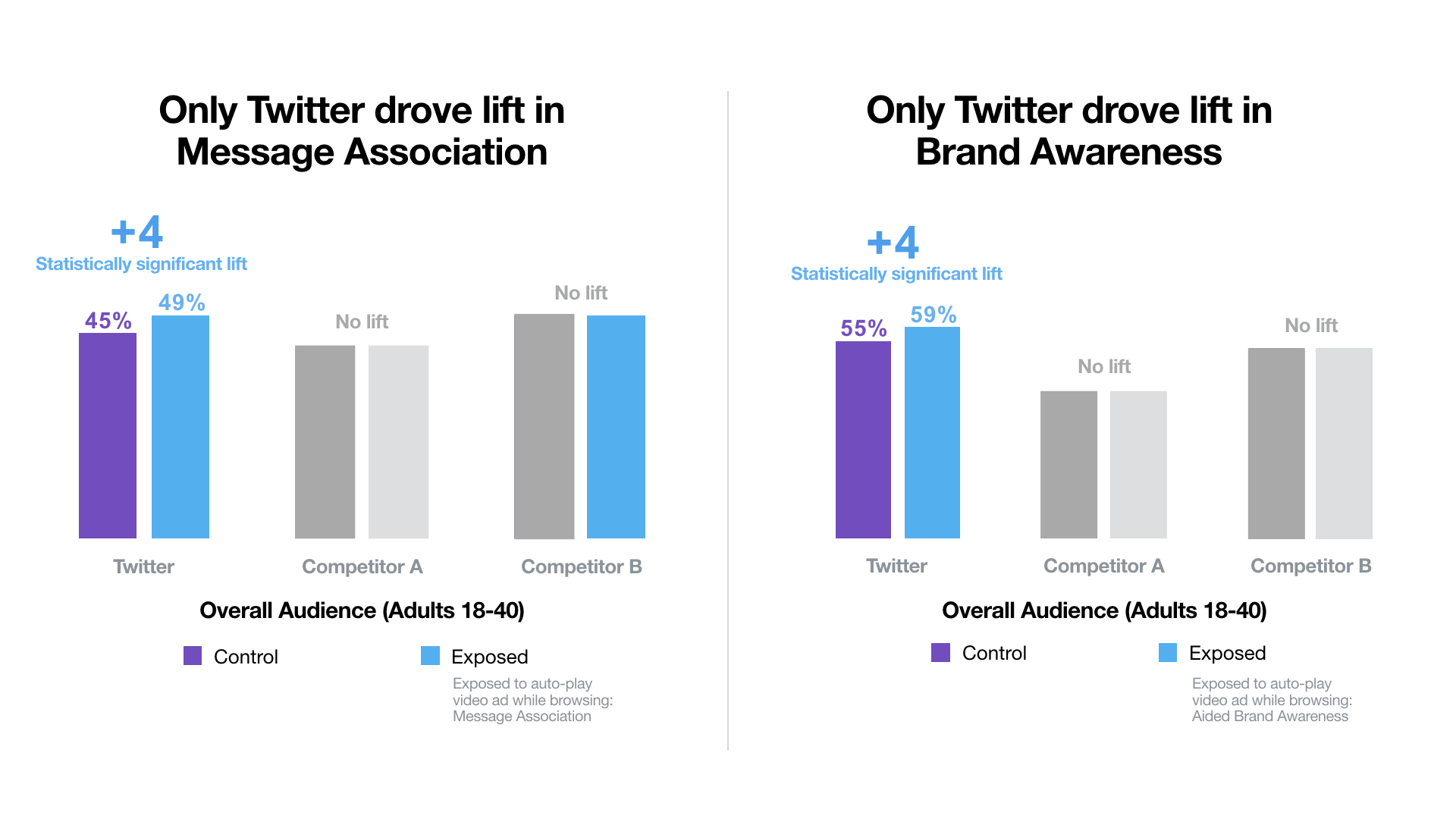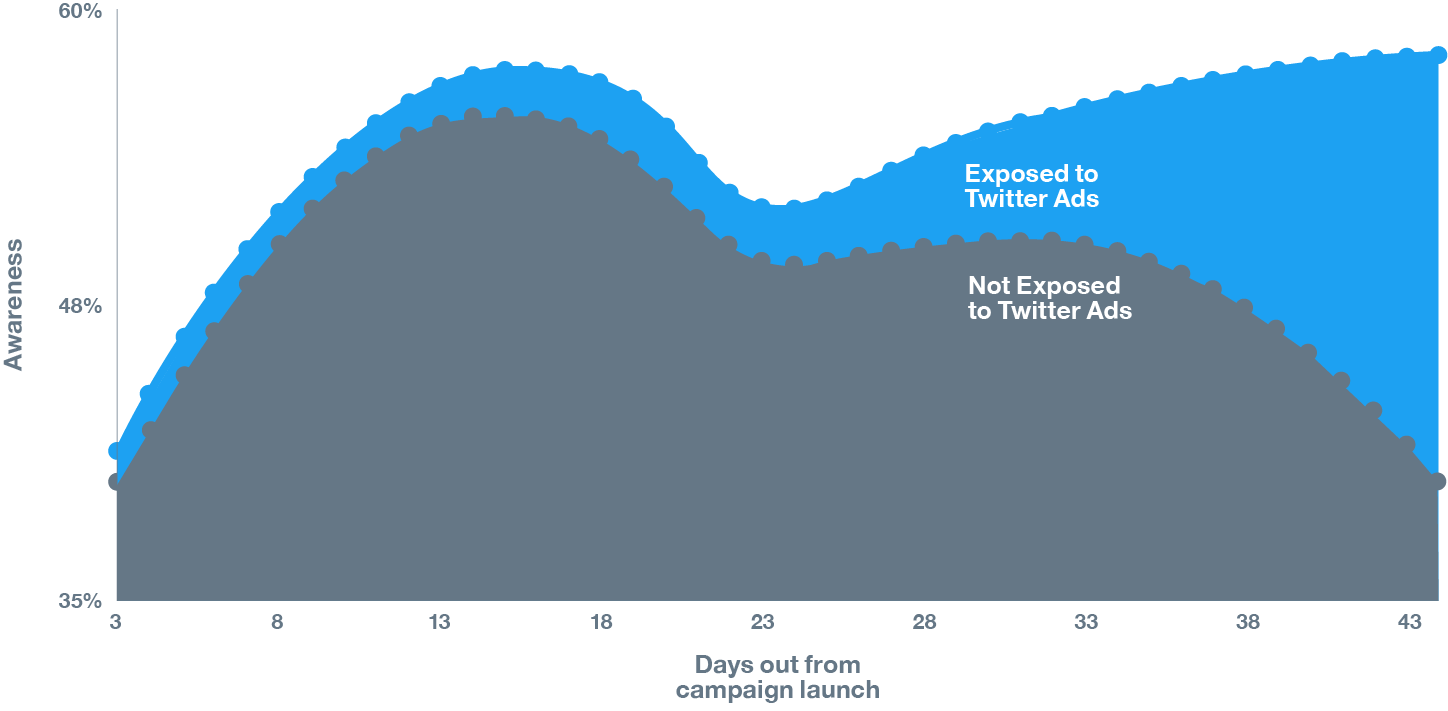Insights
Ready to launch? Why you should turn to Twitter

Nearly every brand has launched something new in the past year. Here's how Twitter can help improve brand metrics and outperform competing platforms for your next launch.
The stakes are high when brands need to launch something new. In fact, 24% to 45% of new products fail1. The competition for attention is fiercer than ever, and launching something new requires an interested and influential audience.
For many brands, Twitter is the go-to platform for successful debuts. Twitter is home to a concentrated group of leaders and influencers, and they come to Twitter to discover what’s happening and seek out new content. Getting your launch in front of this group creates a unique opportunity for mass exposure and cultural impact. When brands connect with the right audience on Twitter, they see significant gains in brand awareness and brand love.
Twitter’s leaned-in audience has worked well for many brands ready to launch. Here are a couple of other research-backed reasons that make Twitter one of the best places for brands to launch something new:
Twitter is intuitively associated with influence and discovery
Research from Kantar/Millward Brown (commissioned by Twitter) measured consumers’ attitudes toward Twitter versus two other leading social platforms. In this case, Kantar found that people automatically and strongly associated Twitter with “influence” and “discovery” much more than with competitor platforms.

Twitter outperforms other platforms
The same study identified how a real-life brand campaign, focused on the launch of a new product, performed on Twitter versus other leading social platforms.
In this study, Twitter was a more effective platform for a new product launch compared to competitors. Nearly everyone using Twitter (90%) read the ad text they were shown, compared with 56% to 61% on the other platforms. And, on Twitter, viewers watched the video ad 3.5X longer.

Among the three platforms studied, Twitter beat other social platforms in driving favorable brand metrics.

The study was performed in a laboratory setting; test subjects were served the same 15-second autoplay video ad, placed in their personal timelines using ad replacement technology, on three platforms. Eye-tracking technology allowed researchers to gauge subjects’ attention, and a survey enabled them to test for the ad’s resonance and efficacy.
What we learned from 86 campaigns that launched something new
To further examine Twitter’s efficacy around launches, we partnered with Nielsen to look at Brand Effect studies for 86 Twitter campaigns that launched something new between September 2015 and August 2017. The results showed that:
54% of launch campaigns led to an average lift of +10% in brand awareness
59% of launch campaigns led to an average lift of +15% in message association
24% of launch campaigns led to an average lift of +8% in favorability, or “brand love,” arguably the toughest metric to move.

Long-term impact
Brands that promote launches on Twitter see sustained lifts in key brand metrics. This is true not only in the short term, but long term as well --- awareness of launches is 4X higher in the last four weeks vs. first two weeks of a campaign.
How do we know this? According to an analysis based on 35 Twitter Launch Nielsen Brand Effect Studies (Sept 2015-Aug 2017), corresponding to ~59,000 survey respondents, brands that promote launches on Twitter see sustained lifts in awareness.
At the start of campaigns, awareness levels are similar among exposed and control users (those not seeing ads on Twitter, but on other channels/platforms). Over time, however, exposure to Twitter media drives incremental awareness --- in fact awareness of launches becomes 4x higher in the last four weeks vs. first two weeks.
90%
of Twitter offline sales studies over the last two years drove a statistically significant increase in sales or buyers/44MMM studies from 2014-2017, average global ROI of $3.36
Methodology
Source: Kantar/Millward Brown Intuitive Associations for Twitter, March 2017
Twitter commissioned a study from Kantar/Millward Brown utilizing a social science technique called an Implicit Association Test to measure consumers’ attitudes toward each platform. This test measures unconscious associations (“System 1 thinking”) embedded in each of our minds.
To do this test, consumers were asked if they associate a word like “influence” with Twitter, Facebook, or Instagram. They were asked to key on their keyboard as quickly as possible if they associated the word with the platform. Kantar then measured how quickly consumers made the associations. These are often split second reactions, but the faster the reaction, the stronger the association.
Source: Nielsen Brand Effect for Twitter
Nielsen Brand Effect for Twitter measures the impact of Promoted Tweet campaigns on brand metrics such as Awareness, Association, Favorability, Purchase Intent, and Advocacy. Measures survey responses from “control” and “exposed” groups across mobile and desktop.
1. McKinsey Global Institute
Editor’s Note: This research and article was co-led by Kara Louis (@karaa).